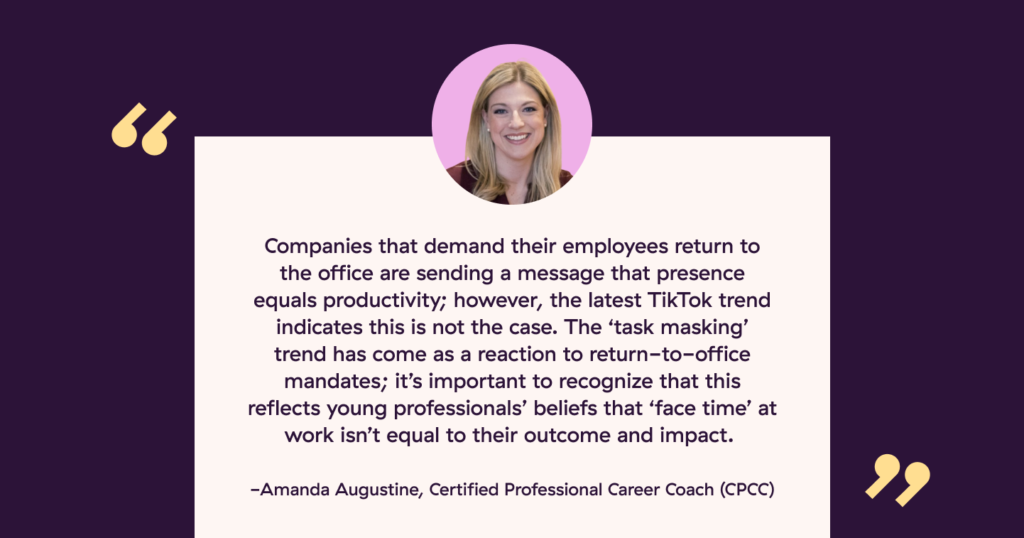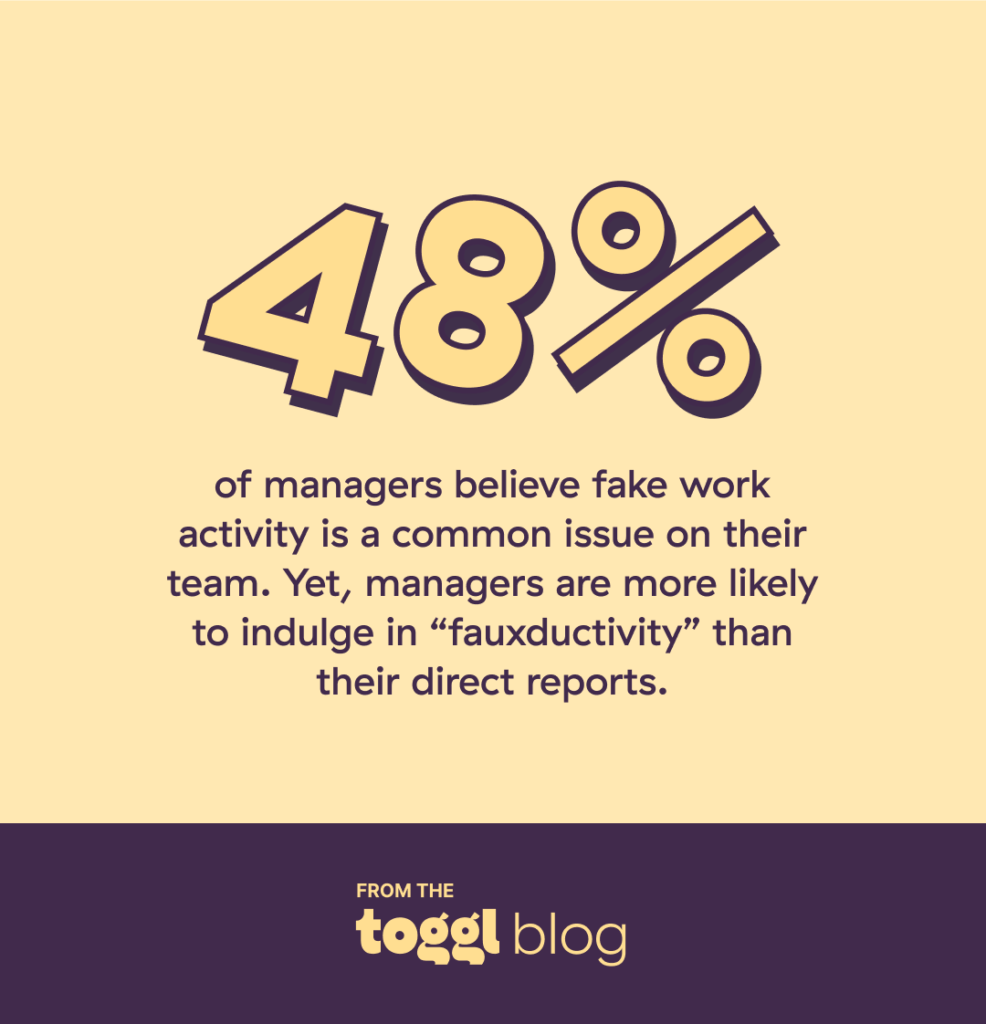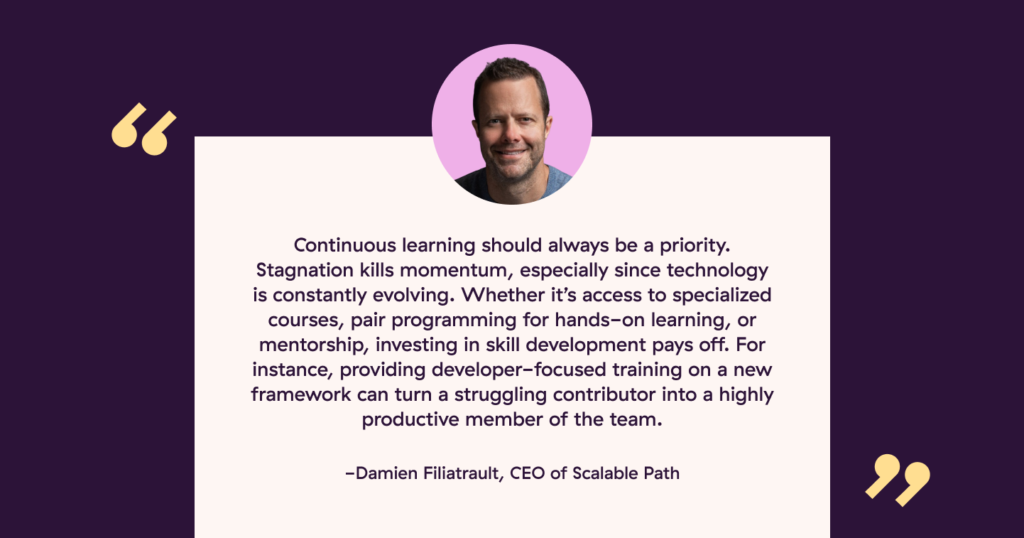Global productivity has jumped sixfold in 30 emerging economies over the past 25 years, which sounds great — but it doesn’t tell the whole story.
In many other economies, McKinsey reports that productivity growth has stalled since the global financial crisis, and some risk never catching up. As organizations face mounting challenges, from economic uncertainty to shifting workforce dynamics, the key to staying competitive lies in unlocking the full potential of your workforce.
But that’s easier said than done. Unproductive employees exist, and trying to motivate them can be seriously frustrating for managers. This guide explores the cost of low productivity in more detail and provides actionable strategies to identify, measure, and improve it.
TL;DR — Key Takeaways
- Productivity baselines provide a clear benchmark for measuring employee performance so companies can easily identify inefficiencies and set realistic targets to improve. Each industry and business relies on different metrics, such as billable hours or units produced, to track success.
- Low productivity costs are unique to your company, but any dip beneath your baseline expectations could mean thousands in lost revenue over a year.
- Spotting unproductive employees involves recognizing clear signs, including “fauxductivity,” a growing TikTok trend in which employees appear busy but don’t achieve meaningful output. Managers must approach these signs with curiosity and support rather than point fingers at their talent.
- Micromanaging is never the solution to overall productivity issues. Instead of stifling employees with constant oversight, managers should provide clarity, trust, and the right tools to set them up for success.
- Unproductivity sounds like an employee issue, but employers and business owners can turn the situation around by building supportive environments, setting clear goals, and creating continuous development opportunities.
- Time tracking tools like Toggl Track transform productivity by providing clear insights into time management. Managers can use this information to make data-backed decisions without invasive monitoring.
What’s a ‘good’ productivity baseline?
A productivity baseline is a standard or benchmark companies can use to measure employee performance against expected output. When this baseline is well-defined, it helps managers objectively assess individual and team productivity as either above or below the target level. From here, they can spot any bottlenecks and work out how to improve the situation.
But how do you define what “good” productivity looks like in your organization? The right baseline will depend on your specific goals, employee roles, and industry standards. There are no cookie cutters here; productivity baselines must be tailored to your company.
Examples of how productivity baselines are measured in different industries
Each industry’s productivity baseline is influenced by its unique workflows, challenges, and goals. By identifying industry-specific metrics, companies can establish realistic expectations and continuously improve their business productivity:
- Technology: Software firms might use agile metrics, such as code commits, resolved tickets, or feature deployments, to set productivity standards.
- Healthcare: Hospitals and other healthcare institutions could focus on patient outcomes by measuring patients seen per hour, successful procedures, or accurate diagnostics.
- Sales: Teams often set targets based on quarterly or annual goals, such as the number of closed deals, revenue generated, or calls made.
- Customer support: Teams aim for high service levels and quick resolutions by tracking metrics related to resolved tickets, response time, or customer satisfaction scores.
- Manufacturing: Top-performing factories set baselines based on machine capacity, workforce efficiency, and output data, such as units produced per hour.
- Consulting: Firms might measure by billable hours logged per consultant, often benchmarking against industry averages and internal targets to ensure profitability and client satisfaction.
- Marketing: Think completed campaigns, leads generated, or conversions achieved, with agencies setting baselines by analyzing previous campaign data and client expectations.
How much is low productivity really costing you?
Low productivity (and the disengagement that causes it) comes at a cost. Collectively, McKinsey puts this cost between $228 million and $355 million per year for a median-sized S&P 500 company. Stretch that over five years, and you’re looking at $1.1 billion in lost value.
But the real impact of low productivity is felt in the heartbeat of your daily business.
- Low team morale: Nothing deflates a high-performing team faster than watching their efforts get drowned out by underperformers who fly under the radar.
- Delayed projects: When productivity dips, deadlines slip — and so do key business opportunities and client trust.
- High turnover rates: Employee burnout spreads quickly when top talent picks up the slack for disengaged teammates, pushing them to seek opportunities elsewhere. The proof? Some 3.2 million US employees quit their roles in December 2024, leaving countless teams scrambling to manage the extra work and wondering if it’s worth the effort.
- Decreased revenue: Poor productivity means lost sales, diminished service quality, and a shrinking bottom line.
- Missed innovation opportunities: Every minute patching your productivity gaps is a minute stolen from your company’s ability to innovate.
The price of low productivity is steep, but the solution is within reach: clear expectations, meaningful support, and a workplace culture that empowers employees rather than stifles them.
How to spot unproductive employees
Unproductivity doesn’t always announce itself loudly — often, it’s a slow, annoying drip you can’t ignore. Spotting it early is key, but remember that it’s not about pointing fingers; it’s about recognizing the signals, digging deeper, and understanding the root cause before taking action.
Be aware of “fauxductivity”
Fake activity is a work trend flooding social media. This “fauxductivity” is the practice of employees appearing busier than they are. For example, by loudly typing at their computer, exhaling loudly as though exasperated, or walking quickly around the office as if in a rush to their next meeting.
Workhuman’s analysis of 3,000 employees in the UK, US, and Ireland reports that Fortune 500 CEOs rank low productivity as the biggest organizational challenge, and 48% of managers believe fake work activity is a common issue on their team. Yet, managers are more likely to indulge in fauxductivity than their direct reports.
Some 38% of C-suite execs and 37% of managers admit to engaging in this behavior, compared to just 32% of non-managers. Clearly, managers need to take a closer look at the behavior they’re modeling.
Certified Professional Career Coach (CPCC) Amanda Augustine explains that fake work may be easier to spot in employees who have been forced to return to the office and are trying to regain some semblance of work-life balance.
“Companies that demand their employees return to the office are sending a message that presence equals productivity; however, the latest TikTok trend indicates this is not the case. The ‘task masking’ trend has come as a reaction to return-to-office mandates; it’s important to recognize that this reflects young professionals’ beliefs that ‘face time’ at work isn’t equal to their outcome and impact.”

Track missed deadlines
When employees regularly miss deadlines, this often indicates deeper issues like poor time management, lack of clarity, or disengagement.
Unfortunately, only 34% of companies currently manage to meet their project deadlines on time, suggesting this is a widespread problem. Keep a close eye on patterns and use tools like Toggl Track to identify bottlenecks and support struggling employees.
Pay attention to disengagement
Disengaged employees often fly under the radar, but the signs are there: minimal participation in meetings, lack of enthusiasm, and reduced collaboration.
Gallup finds only 23% of the global workforce is engaged, with disengagement costing companies $8.8 trillion globally. Frequent employee pulse surveys and honest conversations during regular check-ins can help managers re-engage with teams.
Look out for increased absenteeism
Every employee needs paid time off to rest and replenish throughout the year. But persistent absenteeism can be a warning sign their well-being is suffering. Burnout, dissatisfaction, and personal challenges can all play a role. Track attendance patterns and offer support to keep your team healthy and present.
Spot declining quality of work
When top performers start delivering subpar work, it’s time to investigate. Declining quality could signal burnout, lack of motivation, or skill gaps. Some examples include:
- Increased errors in reports
- Inconsistent attention to detail
- Incomplete tasks
- Drop in creativity or innovation
- Missed quality benchmarks
- Negative client feedback
- Lack of initiative
Provide regular feedback, training opportunities, and clear expectations to help employees maintain high standards.

7 reasons employee performance suffers
Low productivity is often rooted in systemic or leadership challenges. Before jumping to conclusions that your employees are “slacking off,” it’s crucial to examine the bigger picture. Here’s why poor performance can set in and what leaders can do to fix it.
1. Employees have too much busy work
Busy work refers to tasks that give the illusion of productivity but have little to no meaningful impact on company goals. The endless email threads, redundant meetings, and manual data entry leave employees feeling drained without producing tangible results. Unfortunately, 51% of employees say their work “often” or “always” involves busy work. Alarmingly, 29% estimate that these low-value tasks consume at least a quarter of their week.
This is both frustrating and costly. According to Resume Now, 37% of people report busy work takes up 25–50% of their daily workload, while 10% say it consumes more than half of their time. Add the 44% who have experienced multiple abandoned projects without explanation, and it’s clear that inefficiencies are rife. Even worse, 54% of employees lack a voice in addressing these issues.
Busy work stifles creativity and innovation and also contributes to burnout and disengagement. But leaders can change all this by streamlining processes and empowering employees to focus on work that will truly move the needle.
2. Managers don’t know how to set clear expectations
Unclear goals and inconsistent messaging are serious productivity killers. Picture a marketing team pouring dozens of work hours into a campaign that wasn’t actually a priority because their manager failed to communicate the quarterly goals.
Managers can provide specific, measurable, achievable, relevant, and time-bound (SMART) goals to avoid this misalignment and set clear expectations.
Example: A marketing manager might set a SMART goal like: “Increase the company’s social media engagement rate by 20% within six months by posting five targeted content pieces per week across LinkedIn, Instagram, and Twitter.”
This goal is:
- Specific: It focuses on social media engagement
- Measurable: It’s defined by a 20% increase
- Achievable: It’s realistic, based on the available resources
- Relevant: It aligns with the company’s marketing strategy
- Time-bound: It involves a six-month deadline
Without this clarity, even the most talented employees struggle to thrive. As Joel Popoff, CEO of Axwell, puts it, “The easiest way to get people moving in the right direction is to set performance expectations and clear metrics together monthly or weekly. When they take part in the goal-setting process, they feel empowered and motivated.”
Keith Spencer, Career Expert for Resume Now, adds, “Assessing productivity means focusing on outcomes, which starts with setting clear goals and evaluating deliverables against established standards.”
3. Managers are guilty of micromanaging
Micromanagement is a surefire way to stifle creativity, kill morale, and create an environment of distrust. According to a Monster poll, 73% of workers consider micromanagement the biggest workplace red flag, with 46% stating it would drive them to quit their employer entirely.
This toxic management style, where every detail is scrutinized, damages employees’ confidence and autonomy. Research from IngentaConnect highlights that micromanaging managers “strip others of their self-confidence and self-efficacy, leaving them uncertain what they should think, do, or feel without permission.”
Separate research finds millennials, in particular, value autonomy, with 73% stating they prioritize manager trust and opportunities to make their own decisions.
CEO Nate Banks emphasizes, “Micromanaging is not the same as holding someone accountable. Employees need autonomy and trust, but they also need measurable goals, frequent check-ins, and helpful feedback. Finding the right balance between independence and guidance transforms underperforming employees into productive ones.”

4. Employee burnout is rippling through your team
The World Health Organization categorized employee burnout as an “occupational phenomenon” in 2019, with fatigue, lack of enthusiasm, and irritability as telltale signs. Long hours, unrealistic deadlines, and lack of support often fuel this chronic problem, making it much worse than a short-term slump.
Recent data is alarming: 48% of workers across Australia, Canada, France, Germany, India, Japan, the UK, and the US currently struggle with burnout. It’s even more common in women, LGBTQ+ employees, people with disabilities, and deskless workers, with up to 26% higher incidence rates.
Unfortunately, one in four employees experience burnout four or more times each year.
Addressing this level of burnout requires systemic changes: encourage reasonable workloads, provide mental health support for personal issues, set realistic deadlines, and foster open communication. Burnout isn’t something employees can ‘power through’ — it’s a signal that something in your workplace needs to change.
5. The company work environment is toxic
A toxic work environment is one of the most significant contributors to low productivity. Studies show that toxic work environments increase stress levels, leading to higher turnover and absenteeism. According to research published in the National Library of Medicine, employees in toxic environments report lower job satisfaction, diminished mental health, and decreased productivity.
Signs of a toxic environment include:
- Frequent conflicts
- Lack of support from management
- Favoritism
- Unclear communication
- Overcrowded spaces
- Lack of quiet areas
- Zero focus on wellness
To foster a healthier work culture, companies must promote open communication, encourage team-building, and focus on creating an environment where team members never want to leave.
6. Employees don’t feel rewarded for their hard work
Recognition is the fuel that keeps employees engaged. Without it, even the most dedicated team members can lose motivation. In fact, 83.6% of employees say recognition directly impacts their motivation to succeed at work.
Younger employees, especially those aged 18-24, are particularly driven by recognition, with 85% saying they would be more productive if their hard work was acknowledged. It doesn’t have to be grand gestures or incentives — a shoutout in a team meeting, personalized feedback, or even an opportunity to take on a new project can boost morale.
The numbers speak for themselves: 77.9% of employees say they’d be more productive with frequent recognition, and 71% admit that more regular praise would make them less likely to leave their jobs. Regular feedback matters too — 98% of employees who receive daily recognition feel valued, compared to only 37% who receive it yearly.
7. Employers have zero data on where time is spent
You can’t fix what you can’t see. When employers don’t have clear data on where time is spent, they’re essentially flying blind and left guessing about why their projects stall or their teams seem overwhelmed. Bottlenecks remain hidden, inefficiencies go unchecked, and productivity suffers.
Tools like Toggl Track have built-in analytics that deliver real insights into how your team spends its hours — not to micromanage but to help it work smarter. Is the team locked in meetings for too many hours of the week? Are certain tasks eating up more hours than expected? Toggl Track highlights these patterns, giving managers the data they need to reallocate resources and cut unnecessary tasks.

The key to a more productive workforce
Building a productive team isn’t a magic trick. It involves practical strategies to help your team work smarter, stay engaged, and deliver results. Here are six of those strategies you can use to motivate your team.
1. Inspire your people
Inspiration drives commitment. Author and inspirational speaker Simon Sinek puts it perfectly:
“We have to inspire people. We have to give them that sense of cause and vision that their work is worth more. We have to make them feel like they matter — that they’re seen and heard and understood. What ends up happening is those people are not only more motivated and inspired, but if they’re offered a better, higher-paying job somewhere else, they turn it down. Because it’s not just about the bonuses and the money; it’s because they would rather be here with these wonderful people.”
One way to inspire employees is to tap into their strengths. The Six Types of Working Genius assessment by Patrick Lencioni helps leaders identify what energizes their team members. Whether it’s invention, discernment, galvanizing, enablement, tenacity, or wonder — knowing what sparks enthusiasm in your employees allows you to assign tasks that align with their natural talents, making them feel valued and motivated every 👏single 👏 day 👏.
2. Ensure role clarity
Unproductivity often stems from confusion rather than incompetence. According to Gallup, only 45% of employees know what they’re supposed to be doing at work! So, how can we possibly expect our teams to be productive when less than half understand what we need?
Damien Filiatrault, CEO of Scalable Path, emphasizes, “Unproductive employees are rarely inherently so. Success starts with clarity and enablement. Make sure every team member knows what their role is, their goals, and how their individual efforts contribute to the overarching objectives.”
Achieve this role clarity by outlining clear job descriptions, setting specific goals, and explaining how each role fits into the company’s bigger picture. This isn’t a one-and-done process. As your company grows, and the scope of each role changes, be sure to update your job descriptions at least annually so they remain relevant.
3. Monitor processes
Teams using inefficient processes cannot be productive. Jacob Barnes, Co-Founder of FlowSavvy, puts it simply: “It’s mostly workflows that cause problems, not employees. If people aren’t motivated, there’s usually an issue with the system rather than the individual.”
Processes that are too complex, outdated, or poorly managed can overwhelm employees and reduce efficiency. Sometimes workloads are unbalanced, or employees lack the right tools and training, seriously hindering teamwork. One employee might struggle with a heavy workload, while another may need more training in specific software or time management.
Review workflows regularly to spot inefficiencies, gather feedback from your team, and provide the necessary resources or coaching to help them succeed. A well-monitored process ensures employees can focus on what truly matters without unnecessary roadblocks.
4. Equip employees with tools to succeed
Without essential tools, training, and systems, even the most capable teams can struggle. Damien Filiatrault advises, “Instead of labeling employees as unproductive, ask, ‘Have I equipped them to succeed?’ When tools and training align with clear expectations, productivity emerges naturally.”
Inefficiency often stems from ambiguity. As Filiatrault notes:
“Tools such as project management platforms can provide better structure to teams and the organization by enhancing visibility and tracking accountability. Even the best developers and project managers can become disoriented without the right tools to structure tasks and communicate effectively.”
5. Encourage continuous learning
91% of learning and development pros agree that continuous learning is more important than ever for career success. And this makes sense — when employees acquire new skills, they can quickly adapt to new challenges and contribute more effectively.
Scalable Path’s Damien Filiatrault agrees. 👇

6. Commit to regular check-ins
Finally, how can you know what your team needs without checking in? Regular team status updates create space for open communication, feedback, and support.
Jacob Barnes, Co-Founder of FlowSavvy, suggests, “Find out what’s going on through regular meetings and tailor your efforts to the individual. Create performance improvement plans and mock-up weekly calendars together so employees can get those visuals of what they should do, when they should do it, and how long it should take to accomplish each task.”
Need an extra tip? Barnes continues, “Have the employee take notes throughout the week on their progress and then schedule regular follow-up meetings to revisit the plan, make adjustments as needed, and celebrate successes together.”
Improve employee productivity with Toggl Track
Toggl Track helps teams understand how their time is spent without invading anyone’s privacy. Employees have full autonomy over their data — they control all their own time entries and can share, adjust, or delete them at any time. Our strict anti-surveillance stance means there’s no stealth tracking or creepy screenshots — just transparent tools that help employees manage their day better.
Here are three examples of how teams benefit from Toggl Track, each showcasing a key feature:
- Design teams can use Toggl Track to log their time on brainstorming, revisions, and dealing with a client’s constructive feedback. When each designer shares their data with their manager or the rest of the team, it’s easier to estimate future projects more accurately and meet every deadline.
- Consultancy firms can track their billable hours per client. Toggl Track allows consultants to generate detailed reports to create accurate invoices. This intel also enables them to identify profitable areas and improve efficiency.
- Marketers can track time across various tasks such as content creation, campaign management, and reporting. Toggl Track’s insights help them prioritize high-impact activities and allocate resources where they’re needed most.
Ready to boost productivity in your organization? Book a free demo and explore how Toggl Track can improve your team while respecting everyone’s privacy.
Rebecca has 10+ years' experience producing content for HR tech and work management companies. She has a talent for breaking down complex ideas into practical advice that helps businesses and professionals thrive in the modern workplace. Rebecca's content is featured in publications like Forbes, Business Insider, and Entrepreneur, and she also partners with companies like UKG, Deel, monday.com, and Nectar, covering all aspects of the employee lifecycle. As a member of the Josh Bersin Academy, she networks with people professionals and keeps her HR skills sharp with regular courses.




